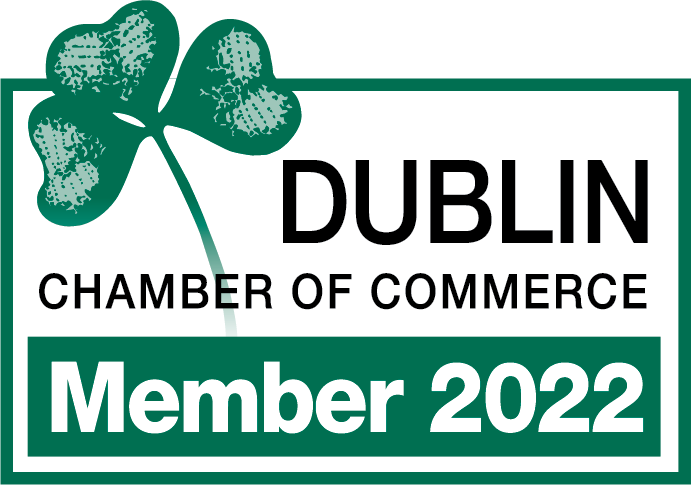When the rubber meets the road in automotive design, the true heroes behind the scenes are the prototypes. These early models, crafted with precision and foresight, are the first to brave the testing grounds and embody the future of transportation.
Automotive prototyping is a critical phase in the lifecycle of vehicle development. It transforms visionary concepts into tangible, testable realities. It's where innovation is put to the test, and every curve, component, and circuit is scrutinized.
In the realm of automotive development, the journey from a sketch on paper to a car on the road is fraught with challenges and opportunities for refinement. This article peels back the layers of the automotive prototyping process to offer insights into how these prototypes shape the cars of tomorrow. Continue reading to discover how each phase of development brings us closer to the vehicles that will drive our future.
What is Automotive Prototyping?
Automotive prototyping is a critical step in the design and development of vehicles. This process involves creating early models, or prototypes, of a vehicle to test various aspects of its design, functionality, and performance. The goal is to identify any potential issues and make improvements before moving on to mass production.
At the heart of automotive prototyping is the desire to innovate and perfect. Engineers and designers work closely to bring a concept from paper to a physical model that can be tested in real-world conditions.
This hands-on approach allows teams to evaluate everything from the efficiency of automotive parts to the overall aesthetic appeal of the vehicle.
The process typically starts with digital designs, often created using computer-aided design (CAD) software. These digital models help in visualizing the final product and serve as a guide for creating the physical prototype.
The next step involves choosing the right materials and techniques for building the prototype. Common methods include 3D printing for complex parts and CNC machining for metal components which allows for precise and rapid production of parts.
Once the prototype is built, it undergoes rigorous testing. This phase is crucial for identifying design flaws or areas for improvement. Testing can cover a wide range of aspects including:
- Safety features
- Durability
- Fuel efficiency
- Ergonomics
Feedback from these tests is invaluable as it informs further refinements in the design.
Design and Virtual Prototyping
In the world of automotive development, the design phase is where creativity meets functionality. This stage sets the foundation for what will eventually become a new vehicle on the road. It involves:
- Sketching out ideas
- Refining them
- Testing the concepts to see if they work in the real world
Virtual prototyping is a game-changer in this process. It allows designers and engineers to create and interact with 3D models of their ideas on computers. This method is not only cost-effective but also saves a lot of time.
Virtual prototyping offers several benefits. First, it makes it possible to test the aerodynamics, safety features, and overall performance of a vehicle before it even exists physically.
Designers can see how the car behaves in different conditions and make necessary adjustments early in the design process. This approach helps in creating proof of concept prototypes, which are crucial for validating the feasibility of a design.
Moreover, it aids in identifying and solving potential problems without the need to build multiple physical prototypes. This can reduce costs and speed up the development cycle.
Another advantage of virtual prototyping is its ability to involve stakeholders in the design process. By using 3D models, teams can easily share ideas and collaborate, making decisions faster and with greater confidence.
This collaborative approach ensures that the final design is well-thought-out and ready for the next phase of development.
Fixture and Tooling Development
After a vehicle's design is finalized, the next step in automotive production is developing fixtures and tooling. This phase is crucial for turning design concepts into tangible automotive parts.
Fixtures are used to hold parts in place during manufacturing processes like welding or assembly to ensure precision and consistency. Tooling, on the other hand, refers to the custom tools and molds used to produce vehicle components, such as automotive body stampings.
The development of fixtures and tooling is a detailed process. It starts with designing tools that precisely match the design specifications of the vehicle parts. This often involves using CAD software to create detailed plans.
Then, materials like kirksite, a zinc-based alloy, are used to make prototype stamping dies. Kirksite is favored for its quick turnaround times and cost-effectiveness, especially for low-volume or prototype production. The ability to cast these materials on-site at a foundry adds to the efficiency, allowing for rapid iterations and adjustments based on testing results.
Inspection and Part Production
Once the fixtures and tooling are ready, the next critical step in automotive prototyping is the inspection and production of parts. This phase is all about making sure that every component not only matches the design specifications but also meets the high standards of quality and safety required in the automotive industry.
The inspection process uses advanced technology to examine every nook and cranny of the parts produced. One of the most important tools in this process is Faro Arm Scanning.
This technology allows engineers to conduct detailed inspections of complex shapes and surfaces by capturing precise measurements. It ensures that the parts produced are accurate to the design within incredibly tight tolerances.
Another technique often used is Macro-Etch Testing. This method is particularly useful for evaluating the quality of automotive body stampings.
It involves etching the metal surface to reveal the microstructure of the material. This test helps identify any defects or inconsistencies that could affect the strength and durability of the part.
The production of parts in automotive prototyping services involves a series of steps, from the initial machining or 3D printing of components to the final assembly and testing. Each part must pass rigorous quality control checks to ensure it performs as expected under real-world conditions.
This attention to detail in both inspection and production is crucial for identifying and addressing any issues before the prototype moves into the next phase of development.
Perfecting the Design for Manufacturability
After a prototype has successfully passed inspection and testing, the next pivotal phase is finalizing the design and ensuring it's ready for manufacturing. This stage is crucial for transforming a prototype into a product that can be produced on a large scale without compromising quality, functionality, or cost-effectiveness.
Finalizing the design involves refining the details and making necessary adjustments based on feedback from the prototyping phase. It's here that the practicality of mass production comes into sharp focus.
Designers and engineers work together to tweak the design for easier, faster, and more cost-efficient manufacturing. This might include:
- Simplifying complex parts
- Using materials that are more readily available
- Modifying designs to improve durability and performance
Addressing manufacturability is where the machining process plays a significant role. The machining process allows for the high-precision creation of parts and is adaptable to changes in the design to ensure that the final product can be manufactured with the desired quality.
It's a time to assess every aspect of the vehicle's design for potential production challenges and opportunities for optimization.
Advanced Manufacturing Techniques
Advanced manufacturing techniques have revolutionized how vehicles are prototyped. They bring unparalleled precision and efficiency to the process. Among these, the following stand out for their critical roles:
- Brake pressing
- 2D/3D lasering
- Stamping
- Machining
- Welding
Brake pressing is a process where metal sheets are bent into specific shapes using a press brake. This technique is essential for forming automotive parts with precise angles and folds, crucial for both aesthetic and functional aspects of vehicle design.
2D/3D lasering, on the other hand, uses high-powered lasers to cut or engrave materials. In automotive prototyping, this technology is invaluable for creating intricate designs and patterns on parts with extreme accuracy. It's especially useful for cutting complex components quickly and with minimal waste.
Stamping is another key technique. It involves the shaping of metal by pressing it into a die. This method is ideal for producing large quantities of automotive body parts efficiently to ensure consistency and quality across all pieces.
Machining processes, including CNC machining, play a significant role in prototyping. They allow for the production of parts with complex geometries and tight tolerances, critical for the engine and transmission components.
Welding brings these parts together. It ensures they form a strong, cohesive whole. Various welding techniques, such as MIG, TIG, and spot welding, are used depending on the materials and the specific requirements of the prototype.
Crafting Precision From Concept to Creation
Automotive prototyping paves the way for the vehicles of the future. It combines cutting-edge technology with precision engineering to turn concepts into reality.
At Hidaka USA, Inc., our expertise in automotive prototyping services sets us apart. With over three decades of experience, state-of-the-art technology, and a commitment to excellence, we ensure your designs transition seamlessly from paper to pavement.
If you're looking for a partner who prioritizes your needs and confidentiality, it's time to reach out to Hidaka USA, Inc. Contact us today to learn how we can drive your project forward.








